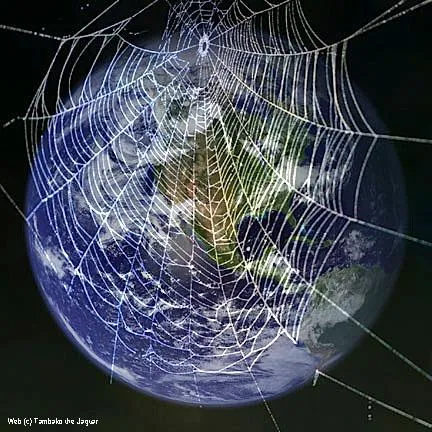The Web?s quarter century

On March 12, the World Wide Web turns 25, and the Pew Research Center’s Internet Project has just released The Web at 25 in the U.S. which “looks back at the rapid change in internet penetration over the last quarter century, and covers new survey findings about Americans’ generally positive evaluations of the internet’s impact on their lives and personal relationships.”
It’s hard to think of the Internet as anything other than just... there. But, “In 1989, Tim Berners-Lee [introduced] the concept of a ‘distributed hypertext system,’ which could link files in an ever-expanding network shaped more like a cobweb than like a chain or tree structure, as was standard at the time. The World Wide Web was born.” And The Web at 25 in the U.S. looks at how this hypertext system has insinuated itself into our lives.
In addition to the current report, Pew, together with Elon University's Imagining the Internet Project, will mark the quarter century “by releasing eight reports about emerging trends in digital technology that are based on surveys of experts about the future of such things as privacy, cybersecurity, the ‘internet of things,’ and net neutrality.”
The Web at 25 covers many of the findings Pew Has released, and which Speed Matters has reported, over the past few years. But this report brings these findings together in one accessible place. In addition, the report evaluates the Web in human terms, based on extensive polling of users and non-users of the Internet.
Perhaps, the most important conclusion is that the Web is, essentially, an institution, and became so in a remarkably short period of time. In 1995, 15 percent of U.S. adults used the Internet. Now, 87 percent do.
However, The Web at 25, does note that adoption is skewed and still not universal:
“Those ages 65 and older are considerably less likely to use the internet than younger Americans; those with college degrees are more likely than those with high school diplomas or no high school diploma to be online; and those in higher-income households are more likely to be online than less well-off Americans.”
But, it’s the value judgments that are most surprising, considering how much, and how vocal, is criticism of online life. Despite the stories of cyber-bullying, of flaming and of the thousands of racist, sexist and just plain mean comments, most people think the Web is a pretty decent place. According to Pew:
“70% of internet users say they had been treated kindly or generously by others online. That compares with 25% who say they have been treated unkindly or been attacked by someone online.
“56% of internet users say they have seen an online group come together to help a person or a community solve a problem. That compares with 25% who say they have left an online group because the interaction became too heated or members were unpleasant to one another.”
And, rather than the Internet fragmenting or diminishing life, three-quarter of Americans believe it’s been a net gain. As Pew concludes, “67% of internet users say their online communication on relationships with family and friends has generally strengthened those relationships, while 18% say it generally weakens those relationships.”
The Web at 25 in the U.S. is an important document. Read the full report here.
The Web at 25 in the U.S. (Pew Research Center, Feb. 27, 2014))
Imagining the Internet Project: A History and Forecast (Elon University website)
CWA members oppose AT&T’s attempts to stop serving rural and low-income communities in California
CWA urges FCC to deny industry attempts to loosen pole attachment standards
CWA District 6 reaches agreement with AT&T Mobility



